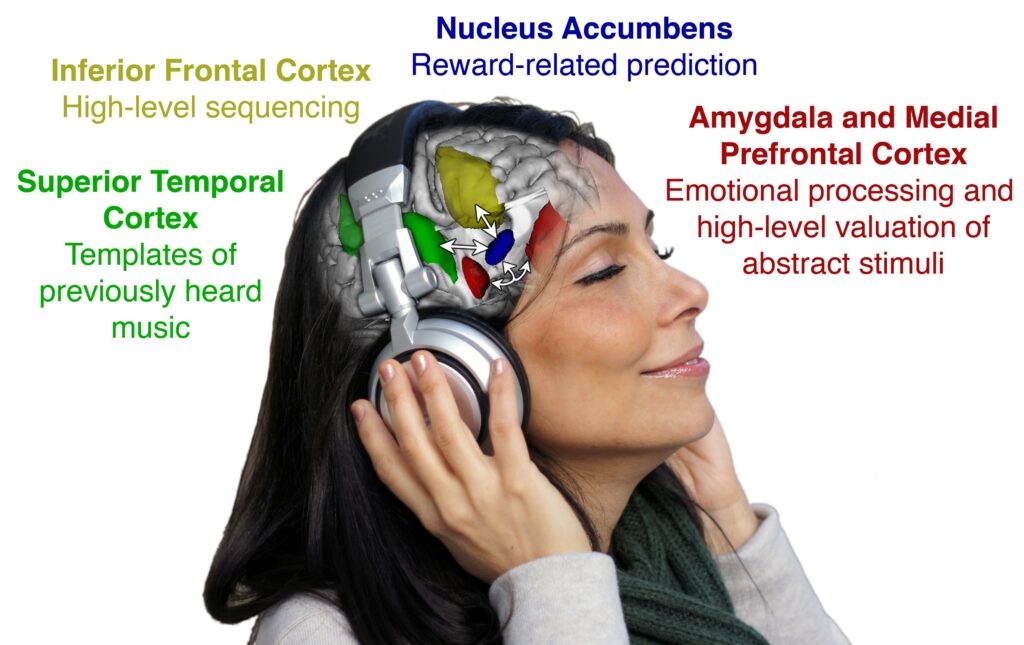Heardle Science: Unraveling Music Challenges

Heardle Science, Music has always been a universal language that transcends borders, cultures, and generations. In the digital age, the fusion of technology and music has given rise to innovative platforms that engage audiences in unique and interactive ways. One platform making waves in the online music community is Heardle, a game that challenges players to guess songs based on minimalist arrangements. Beyond being a source of entertainment, Heardle science offers a fascinating glimpse into the science of how our brains process and respond to musical challenges.
The Cognitive Puzzle of Heardle Science:
Heardle Science captivating simplicity belies the intricate cognitive processes it triggers. The game ingeniously presents players with a visual representation of a song’s melody, depicted through a series of dashes. Deciphering this musical puzzle becomes a journey into the heart of auditory perception and memory, where players navigate the delicate interplay between simplicity and complexity.
As players advance through escalating difficulty levels, Heardle becomes a mental workout that delves into an array of cognitive functions. Pattern recognition takes center stage, demanding that players discern musical structures and unravel the complexities of each auditory puzzle. The evolving challenge propels participants into a realm where understanding musical nuances becomes paramount.
The minimalist format, far from being a limitation, serves as a canvas for players to paint their cognitive responses. Memory recall becomes a crucial skill, with players drawing upon their musical knowledge bank to unlock the mystery behind each set of dashes. The mental challenge reaches its zenith, necessitating a profound comprehension of musical structure and an acute sensitivity to the subtleties that distinguish one song from another.
Heardle Science in its ingenious simplicity, becomes a gateway for players to explore the depth of their musical cognition. The game’s progression mirrors the intricate layers of musical complexity, enticing players to hone their abilities in auditory analysis, memory retention, and pattern recognition.
In essence, Heardle Science cognitive puzzle transcends its gaming allure, offering players a nuanced exploration of their mental acuity in the realm of music. As participants grapple with each melodic enigma, they not only enjoy the thrill of the game but also embark on a journey of self-discovery, unraveling the mysteries of their own cognitive prowess in the face of music’s intricate tapestry.
The Role of Pattern Recognition:
At the core of Heardle Science challenge is the human brain’s remarkable ability to recognize patterns. Music, with its recurring motifs and structures, is inherently patterned. When exposed to a melody, our brains instinctively seek familiar patterns based on our knowledge of musical conventions.
Heardle Science leverages this innate cognitive function by presenting players with fragments of melodies that trigger pattern recognition. Successfully identifying a song involves recalling stored patterns from memory and matching them to the auditory input—a process that showcases the intricate interplay between our auditory and cognitive faculties.
Auditory Memory and Recall:
Heardle Science underscores the significance of auditory memory in our musical experiences. As players engage with the game, they draw upon their memory banks to recall melodies associated with specific songs. The challenge becomes not only recognizing the pattern but also retrieving the corresponding memory of the complete song.
This aspect of the game aligns with research on the role of music in memory recall. Music has the power to evoke vivid memories and emotions, and Heardle capitalizes on this phenomenon to create a dynamic and engaging user experience.
Music as a Multisensory Experience:
Beyond its cognitive dimensions, Heardle Science highlights the multisensory nature of music perception. While the game primarily focuses on auditory input, players often find themselves mentally “hearing” the melody, visualizing musical notes, and even experiencing a sense of rhythm—all integral components of the holistic music experience.
This multisensory engagement contributes to the immersive nature of Heardle, demonstrating that our brains process music not only as a sound but also as a rich sensory tapestry. The game becomes a gateway to exploring the interconnectedness of auditory, visual, and cognitive processes.
Educational Potential and Cognitive Benefits:
Heardle’s success extends beyond its entertainment value, pointing to potential educational applications and cognitive benefits. The game offers a playful yet effective means of honing musical knowledge, ear training, and cognitive skills. As players immerse themselves in deciphering melodies, they inadvertently enhance their musical literacy and sharpen cognitive functions associated with auditory processing and memory.
The Future of Music Engagement:
Heardle represents a novel approach to music engagement in the digital age, blending technology, interactivity, and cognitive challenges. As technology continues to reshape how we interact with music, platforms like Heardle pave the way for new forms of musical
The success of Heardle lies not only in its addictive gameplay but also in its ability to tap into the inherent curiosity and cognitive prowess of players. In deciphering musical puzzles, participants embark on a journey that transcends entertainment, offering valuable insights into the intricate ways our brains respond to the art of sound.
conclusion
Heardle stands as a testament to the enduring fascination with music and the evolving landscape of digital entertainment. As players decode melodies and unravel musical mysteries, they not only enjoy the thrill of the game but also contribute to the ongoing dialogue about the profound connection between music, cognition, and the limitless capabilities of the human brain.






